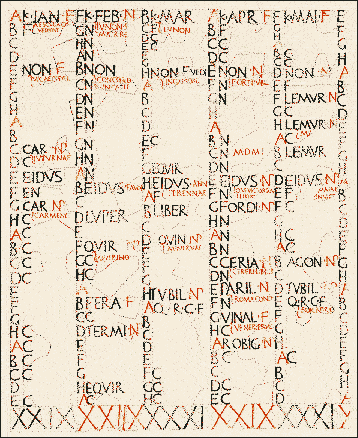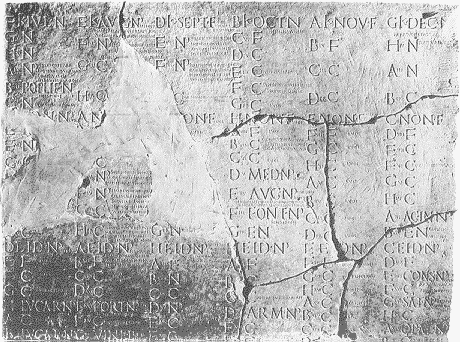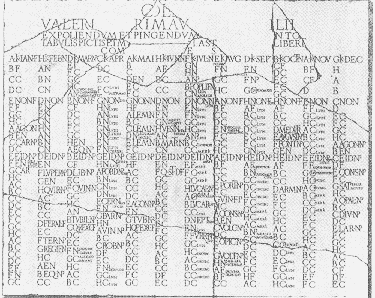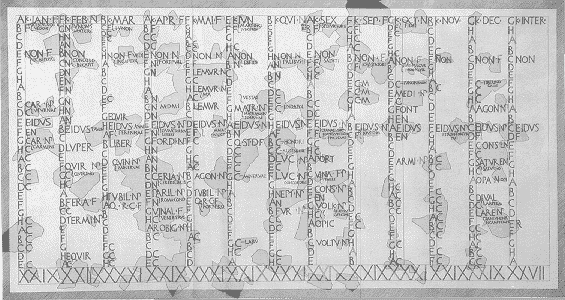Examples of:
Roman Fasti
Some 200 fragments of Roman calendars have been found so far, and they are collectively known as Fasti. There is a common style and format reflected in all of them, but there are also many differences, particularly regional differences. Some beautiful examples have been found in nearly complete condition with the original colors still visible.
In the fasti below, notice that the Nones were lined up horizontally by squeezing in the first six days of some months into the space taken up by four in the others. This gave an orderly visual effect to the top part of the calendar, but was not applied to the Ides. Similarly squeezed are the names of the gods to whom particular days were sacred.
The calendar represented here is for the months of Januarius, Februarius and Martius. It is from the heyday of the Empire, when the Julian calendar was well-established. Although the original calendar of the Roman Republic was replaced, due to its many problems, some obsolete conventions continued to be maintained in the new calendar, such as voting days. It was created at a time January and February were the first two months of the year. Each day in their eight-day marketing week is identified by one of the letters A thru H listed vertically on the far left side of each month’s column.
On the top line between day letter and abbreviation for month name is a "k·" short for kalendae, the name Romans gave the first day of each month. You can see that the first day of January was identified with the letter A. Special days were indicated by red letters including an A for the first day of each eight day period or an N or other letter in addition to the day letter for some other days. This may well be the source of our own term "Red Letter Days." You can read about the meaning of these letters at a page on the web.
Note that the last day of January is labeled E and the first day of February continues the weekly cycle with an F. Similarly, the last day of February is an A and the first day of March is labeled B.
Roman Numerals for 29, 28 and 31 at the bottom of the painting indicate the number of days in those first three months of the Roman Republican Calendar.

Here are a three more examples of various Fasti...




